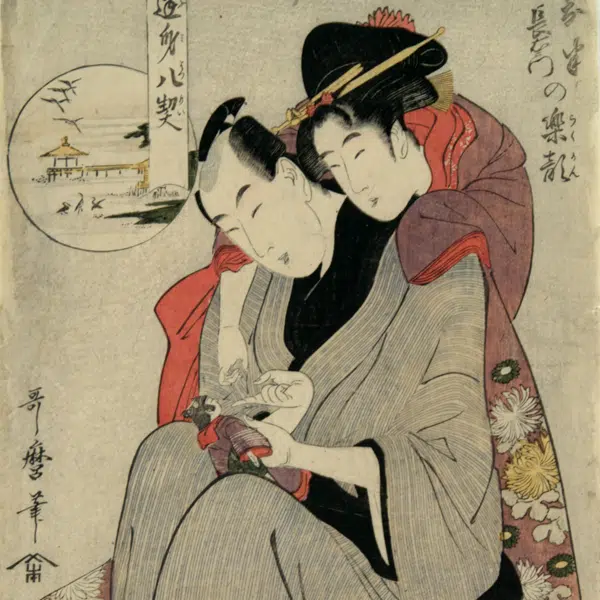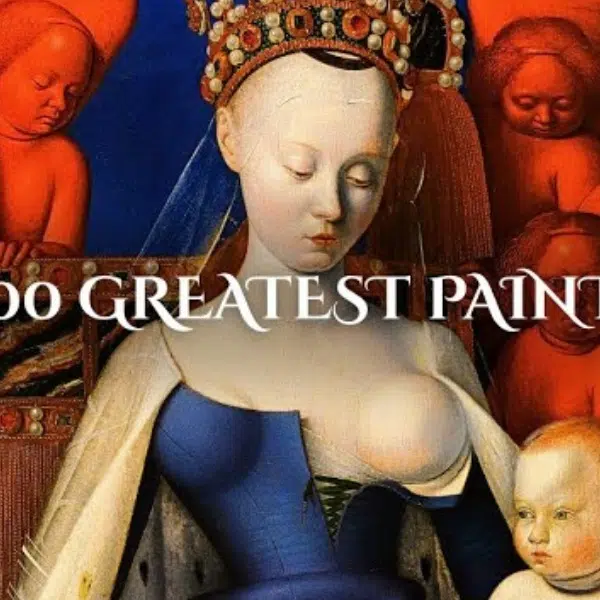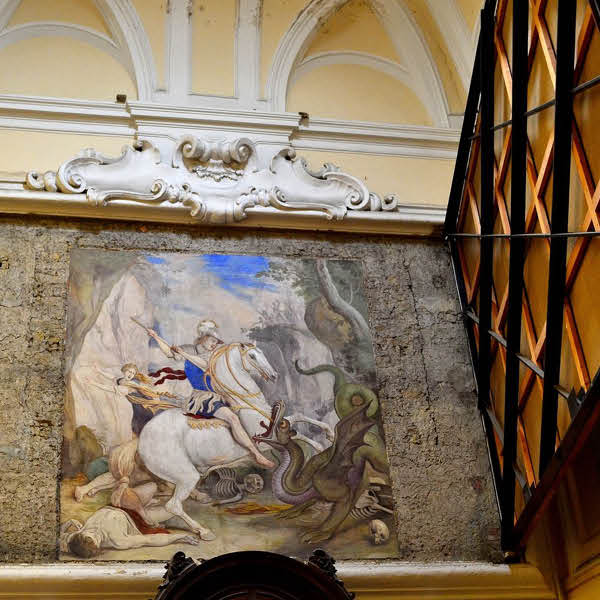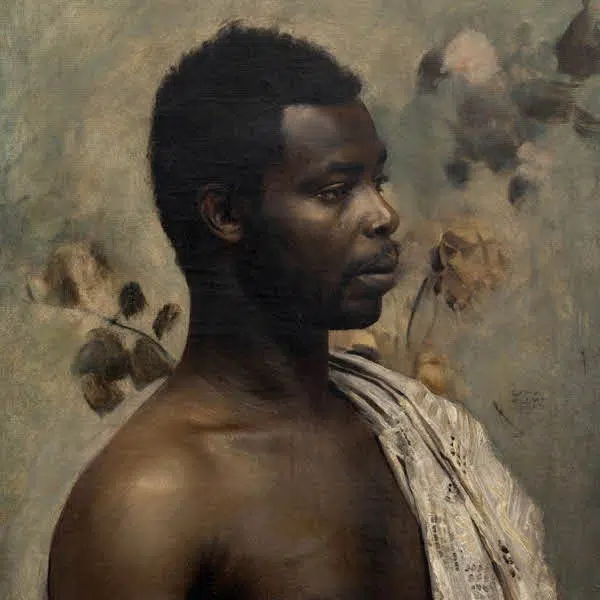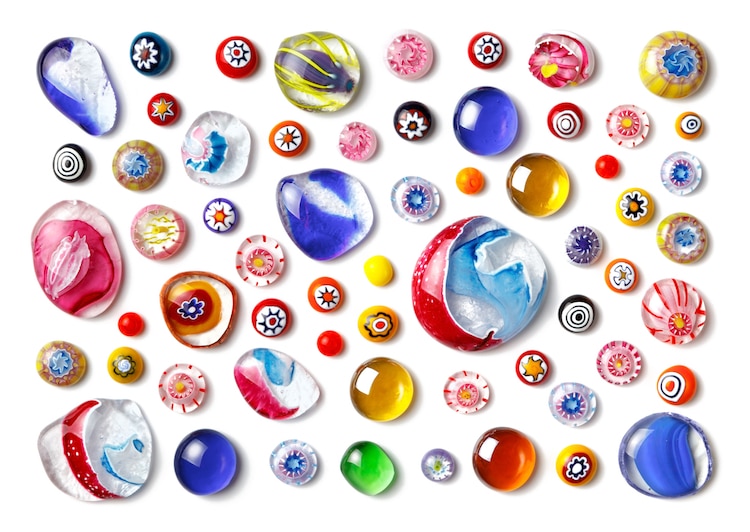
Stock Photos from Aleksandr Simonov/Shutterstock
For thousands of years, artisans have explored the endless possibilities offered by glass. Spanning time and place, the ancient practice of glassmaking remains one of the world's most prevalent art forms. Together, with its versatility, it is this timelessness that has solidified the importance of glassmaking in the history of art.
Have you ever wondered how this whimsical art form has evolved? Here, we take a closer look at the history of glass art, tracing the major glassmaking contributions made by cultures around the world.
How is glass made?
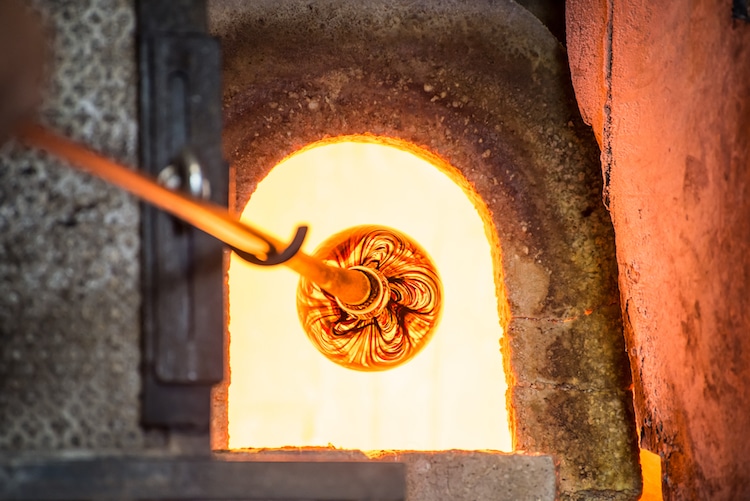
Stock Photos from Mirelle/Shutterstock
Typical glass is made up of quartz sand (silica), soda (sodium carbonate), and lime (calcium oxide). When heated at a very high temperature (around 3,200 degrees Fahrenheit) and quickly cooled, this mixture becomes molten glass.
The malleable material can be shaped using various methods, including core forming (when strips of hot glass are wound around a heat-resistant core), casting (when the molten glass is poured into a mold), and glassblowing (when a blowpipe is used to shape hot glass into a pliable bubble).
These methods of glassmaking have been employed by artisans for centuries, culminating in a rich practice that has transcended both object and culture.
The History of Glass Making
Ancient Beads
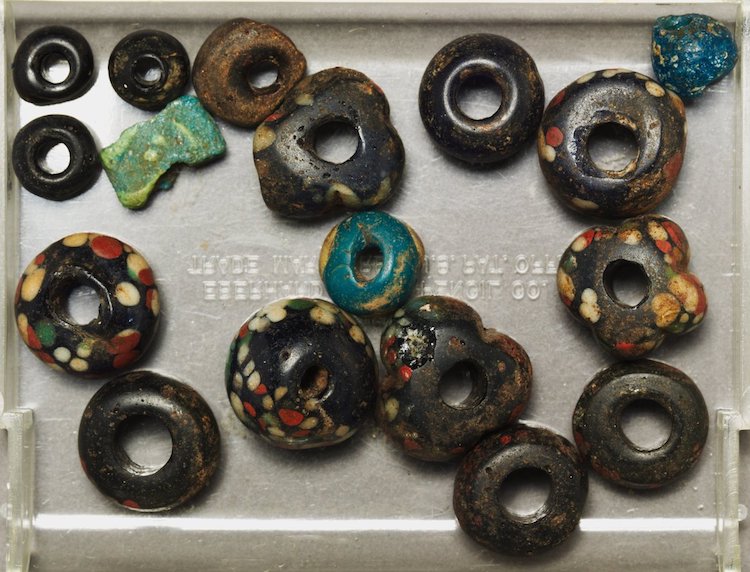
Group of Beads, 2nd Century CE (Photo: The Cleveland Museum of Art Public Domain)
The earliest known instance of glass as an artistic medium can be found in beads. In the third millennium BCE, ancient Egyptians began crafting cobalt-blue beads using a method comparable to core forming.
In addition to Egypt, glass beads would pop up in a string of cultures in succeeding centuries, including Iran 2,000 years later and China in the 1st century BCE.
Mesopotamian Mosaics
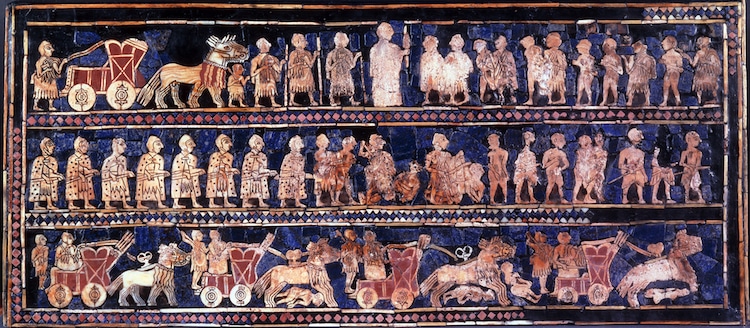
“War” detail from “The Standard of Ur,” 2600-2400 BCE (Photo: Wikimedia Commons Public Domain)
Shortly after the emergence of bead-making in Egypt, artisans in Mesopotamia began crafting mosaics—assemblages comprising tessera (small fragments of glass, stone, or other organic materials). These mosaics were mostly found in temples and contained an exquisite collection of ivory pieces, seashells, and smooth stones.
While not made of glass, these decorative collages laid the groundwork for mosaics made thousands of years later during the Hellenistic Period.
Hellenistic Wares
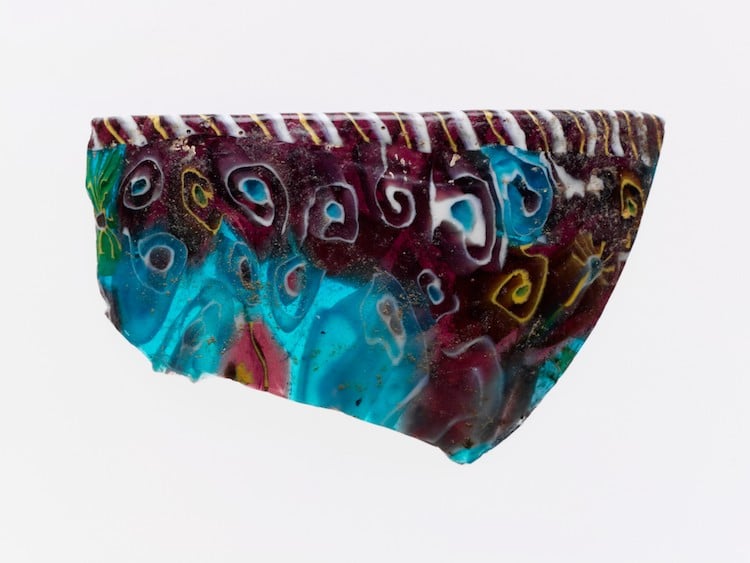
Mosaic glass bowl fragment, 2nd–mid-1st century BCE (Photo: The Metropolitan Museum of Art Public Domain)
The Hellenistic period was an era in ancient history that lasted from 323 BCE to 31 CE. In addition to mosaics, which featured both intricate patterns and motifs inspired by Classical mythology, Hellenistic glassmakers in Greece perfected the art of core forming. Using this technique, they produced opaque (not transparent), handheld vessels designed to hold perfumed oils.
Inspired by this approach, glassmakers in contemporary Italy began producing millefiori (from the Italian mille, or “thousand,” and fiori, or “flowers”), a mosaic glass made up of molten glass rods that have been cut to reveal their multicolored cross-sections.
Glassblowing in the Roman Empire
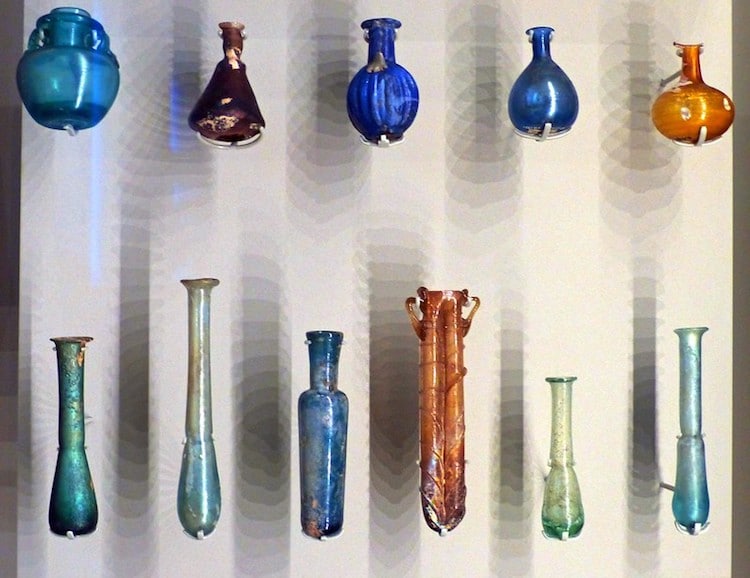
Photo: Charos Pix CC BY-NC-SA 2.0
In the first century BCE, glassblowing emerged with the establishment of the Roman Empire. Invented by Syrians, this technique was used to craft glass vessels for commercial consumption—a characteristic that led to its proliferation around the empire and, later, the entire world.
Islamic Colored Glass

Jabir ibn Hayyan Geber, Arabian alchemist (Photo: Wellcome Collection CC BY 4.0)
The 8th century saw glassmakers in the Middle East began producing colored glass. In Kitab al-Durra al-Maknuna (“The Book of the Hidden Pearl”), an Arabic manuscript written by Persian chemist Jābir ibn Ḥayyān, the secret behind the magical medium is revealed, as dozens of “recipes” for colored glass (made using cobalt oxide) and artificial gemstones are documented.
Medieval Stained Glass Windows
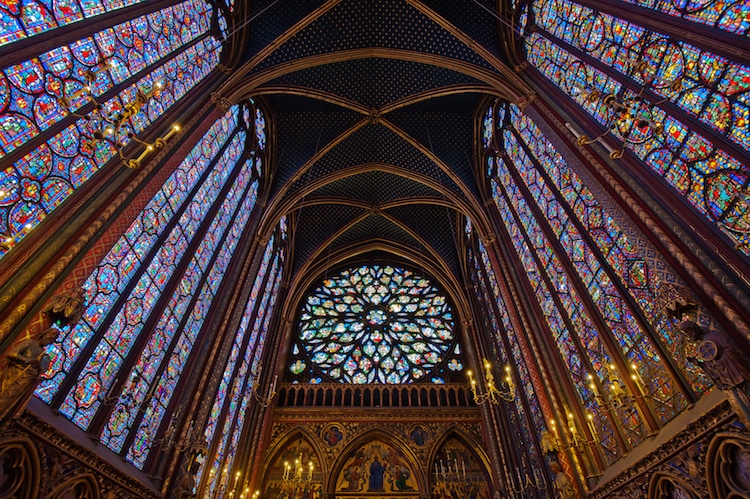
Sainte-Chapelle in Paris, France (Stock Photos from javarman/Shutterstock)
By the Middle Ages, colored glass could be found all over Europe in the form of stained glass windows. Until the 12th century, these windows were small and featured simple compositions defined by thick iron frames—a style typical of Romanesque architecture.
In the 12th century, however, Gothic architecture emerged, and windows became larger, lighter, and—thanks to tracery, a decorative yet durable form of stone support—increasingly ornate.
Venetian Chandeliers
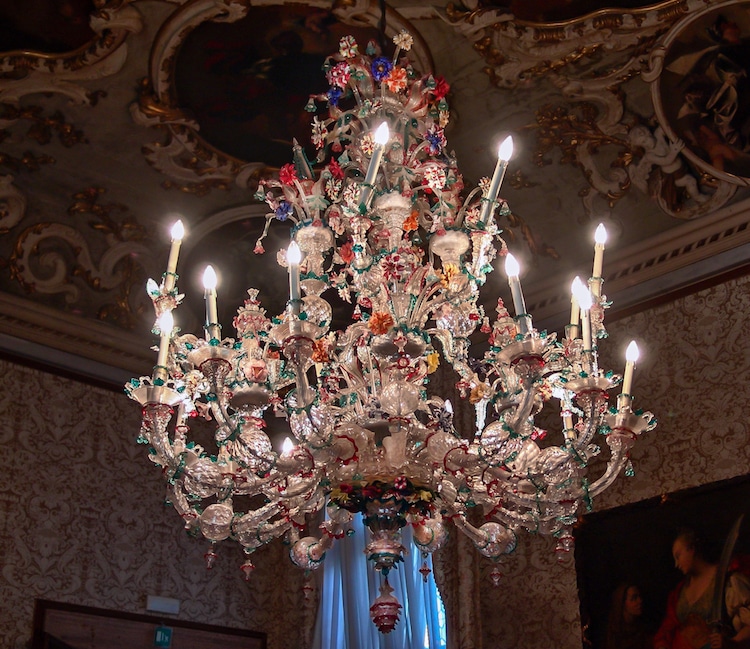
Ca' Rezzonico, Venice – Murano glass chandelier with twenty lights in two rows, decorated with flowers in bright colored glass, produced in the mid-eighteenth century by Giuseppe Briati's studio in Murano (Photo: Wikimedia Commons CC BY-SA 4.0)
During the Renaissance, medieval stained glass windows waned in popularity while, in Venice, luxury glassmaking saw a revival. Here, glass master Giuseppe Briati designed the ciocche chandelier, an elaborate fixture featuring floral garlands and sprigs of leaves adorned with Venetian crystal, blown glass, and gold leaf.
The ciocche has come to typify Murano glass, a genre of glassmaking known for its innovation and beauty.
Tiffany Lamps
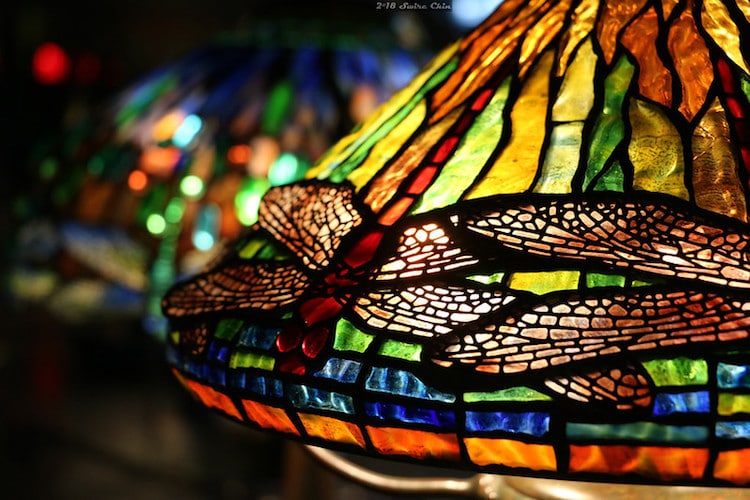
(Photo: Can Pac Swire CC BY-NC 2.0)
In 1885, Louis Comfort Tiffany established the Tiffany Glass and Decorating Company in New York City. Inspired by glass art of the past (particularly the blown glass of the Roman Empire), Tiffany crafted spectacular stained glass lamps without the use of paint or enamel.
To achieve this, he designed favrile glass, a medium he compared to “the wings of certain American butterflies, the necks of pigeons and peacocks, the wing covers of various beetles.”
Contemporary Glass Art
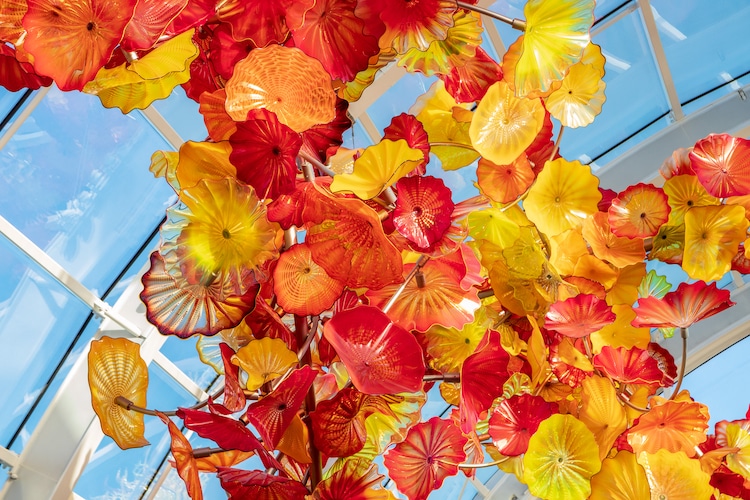
Stock Photos from ApinBen4289/Shutterstock
Contemporary glassmakers continue to keep the age-old tradition alive. Many, like American artist Dale Chihuly, have built upon the ancient art of blown glass to produce mesmerizing, avant-garde sculptures. Others have proven the timelessness of the traditional mosaic, which now materializes as everything from pothole fillings to digital recreations. And some simply shatter the boundaries of glassmaking with their innovative techniques.
In any case, one thing is crystal clear: today's top glass artists have taken an already-ethereal craft to exciting new heights.
Related Articles:
This “Normal” Drinking Glass Is Actually an Ancient Greek Party Prank
7 of the Most Splendid Stained Glass Windows in the World
Hand-Blown Glass Containers Mimicking Veins Add an Artistic Twist to Pouring Wine
Dazzling Elements of Ancient Islamic Architecture We Still See Today
Paris Gains Hope as Notre-Dame’s Iconic Rose Windows Are Reported Safe













































































